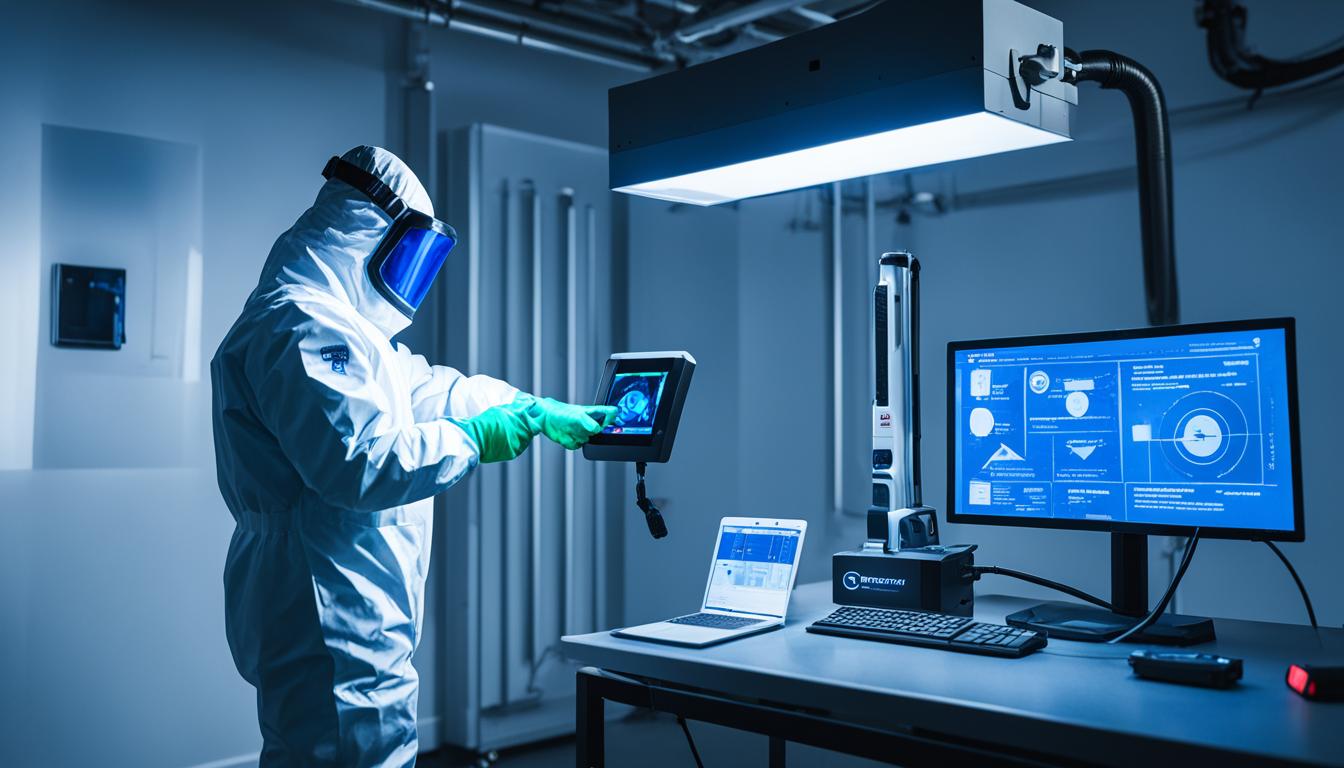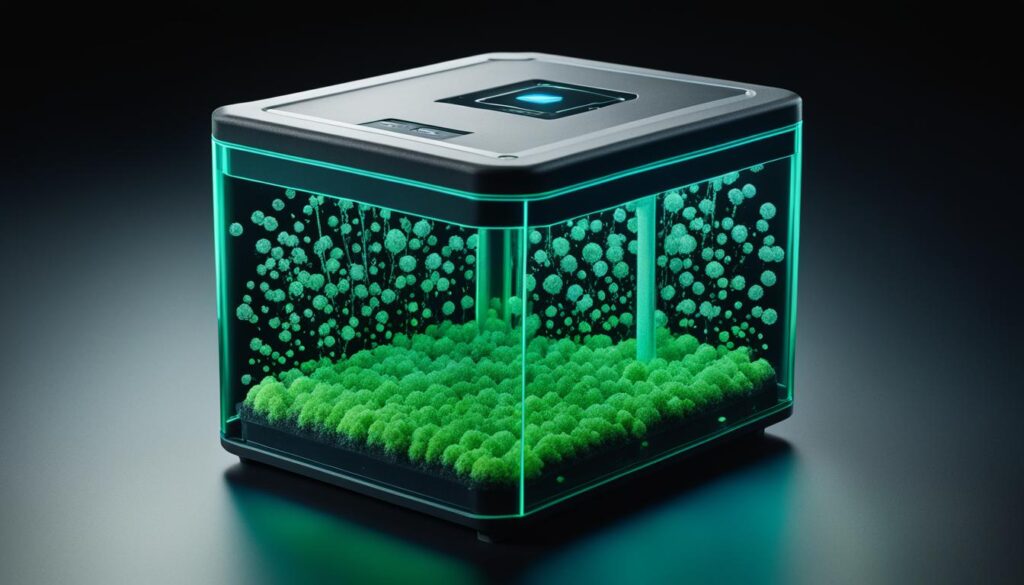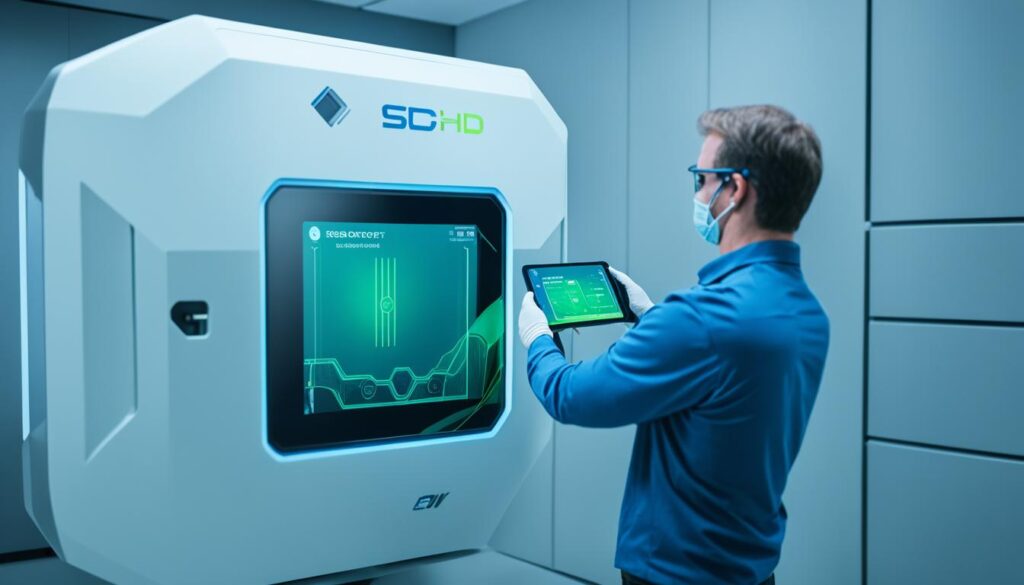
Advanced Mold Assessment Techniques Unveiled
When it comes to mold testing and inspection, traditional methods often fall short in providing accurate and comprehensive results. Fortunately, innovative mold assessment techniques, mold testing advancements, and cutting-edge mold inspection methods have emerged to address these limitations. These advancements have revolutionized the industry, ensuring a more thorough and precise assessment of indoor environments.
In this article, we will explore the latest advancements in mold assessment techniques, shedding light on the modern approaches used to detect and evaluate mold growth. From state-of-the-art mold analysis tools to advanced mold identification techniques, these cutting-edge methods are setting new standards in mold assessment.
Key Takeaways:
- Innovative mold assessment techniques have transformed mold testing and inspection.
- Modern mold detection strategies utilize state-of-the-art mold analysis tools.
- Advanced mold identification techniques ensure accurate assessment of mold growth.
- Cutting-edge mold inspection methods employ groundbreaking assessment technologies.
- Staying up to date with these advancements is crucial for effective mold prevention and remediation.
Modern Mold Detection Strategies
In recent years, modern mold detection strategies have revolutionized the field of mold assessment. These state-of-the-art techniques, coupled with advanced mold analysis tools and identification techniques, have significantly enhanced the accuracy and effectiveness of mold detection and assessment.
One of the key advancements in modern mold detection is the utilization of advanced mold analysis tools. These tools employ cutting-edge technology to detect and quantify mold spores in indoor environments. By analyzing air samples or surface samples, these tools provide valuable insights into the presence and concentration of mold, enabling professionals to make informed decisions about remediation.
“The use of state-of-the-art mold analysis tools has greatly improved our ability to detect and assess mold growth. With these tools, we can accurately quantify the extent of contamination and identify specific mold species present in a given environment.”
– Dr. Emily Johnson, Mold Assessment Expert
In addition to advanced analysis tools, modern mold detection strategies also incorporate advanced mold identification techniques. These techniques involve the use of laboratory analysis and DNA sequencing to accurately identify the types of mold present. This level of specificity is crucial in understanding the potential health risks associated with different mold species and guiding effective remediation strategies.
By combining these modern mold detection strategies with thorough visual inspections and moisture assessment, professionals can gain a comprehensive understanding of mold growth in indoor environments. This holistic approach allows for targeted remediation efforts, ensuring the safety and well-being of occupants.
Benefits of Modern Mold Detection Strategies:
- Accurate quantification of mold spores
- Identification of specific mold species
- Enhanced understanding of potential health risks
- Targeted and effective mold remediation
- Improved indoor air quality
In conclusion, modern mold detection strategies, state-of-the-art mold analysis tools, and advanced mold identification techniques have significantly advanced the field of mold assessment. These innovative approaches have revolutionized the way we detect, identify, and address mold growth, ensuring healthier indoor environments for all.

Cutting-edge Mold Inspection Methods
When it comes to mold inspection, staying on top of the latest advancements is crucial for accurate assessment and effective remediation. With the development of groundbreaking mold assessment technologies, inspectors now have access to cutting-edge methods that revolutionize the inspection process.
One such innovation is the use of advanced mold detection devices that employ state-of-the-art sensors and analytical capabilities. These devices can swiftly identify and quantify the presence of mold in various indoor environments, providing inspectors with real-time data for informed decision-making.
Additionally, the integration of remote sensing technologies allows inspectors to conduct thorough mold assessments without invasive procedures. By utilizing remote sensors and imaging techniques, inspectors can explore concealed areas and analyze potential mold growth without causing unnecessary disruption or damage.
The integration of cutting-edge mold inspection methods and groundbreaking assessment technologies has significantly enhanced the accuracy and efficiency of mold assessments, enabling inspectors to identify hidden mold growth and assess potential health risks with precision.

The Role of Innovative Sampling Techniques
In conjunction with advanced detection devices, innovative sampling techniques play a vital role in comprehensive mold inspections. These techniques involve the collection of air, surface, or bulk samples, which are then analyzed to determine mold species and concentration levels.
Traditional methods of sample collection have their limitations, often requiring time-consuming laboratory analysis. However, with the advent of cutting-edge sampling technologies, inspectors can now obtain rapid results on-site, saving time and allowing for prompt decision-making.
Implementing Quantitative Data Analysis
Quantitative data analysis is an essential component of modern mold inspections. By evaluating and interpreting data collected through advanced detection devices and sampling techniques, inspectors can gain valuable insights into the severity of mold contamination and potential health risks.
Through the use of sophisticated analytical software, inspectors can assess mold spore counts, species distribution, and other key factors. This quantitative data analysis enables them to provide accurate reports and recommendations for effective mold remediation strategies.
Ensuring Safety and Compliance
With cutting-edge mold inspection methods and groundbreaking assessment technologies at their disposal, inspectors can ensure the safety and compliance of indoor environments. Through thorough evaluations and accurate identification of mold growth, potential health hazards can be addressed promptly, safeguarding the well-being of occupants.
| Advantages of Cutting-edge Mold Inspection Methods | Benefits |
|---|---|
| Improved accuracy | Reliable assessment of mold growth |
| Time-efficiency | Rapid on-site analysis and decision-making |
| Enhanced safety | Prompt identification and mitigation of health risks |
| Comprehensive evaluations | In-depth assessment of hidden mold growth |
Conclusion
In conclusion, the field of mold assessment has witnessed significant advancements in recent years. These innovative mold assessment techniques, coupled with mold testing advancements and cutting-edge mold inspection methods, have revolutionized the way we detect and evaluate mold growth.
Through the utilization of modern mold detection strategies and state-of-the-art mold analysis tools, professionals can now accurately identify and assess mold in indoor environments. The implementation of advanced mold identification techniques, supported by groundbreaking mold assessment technologies, ensures a comprehensive and precise evaluation of potential mold-related risks.
By staying updated with these state-of-the-art advancements, individuals and professionals can proactively prevent and address mold-related issues, safeguarding the health and well-being within indoor spaces. The combination of these innovative mold assessment techniques has disrupted traditional approaches, allowing for more efficient and accurate assessments, thus enabling timely intervention and effective mold management.




